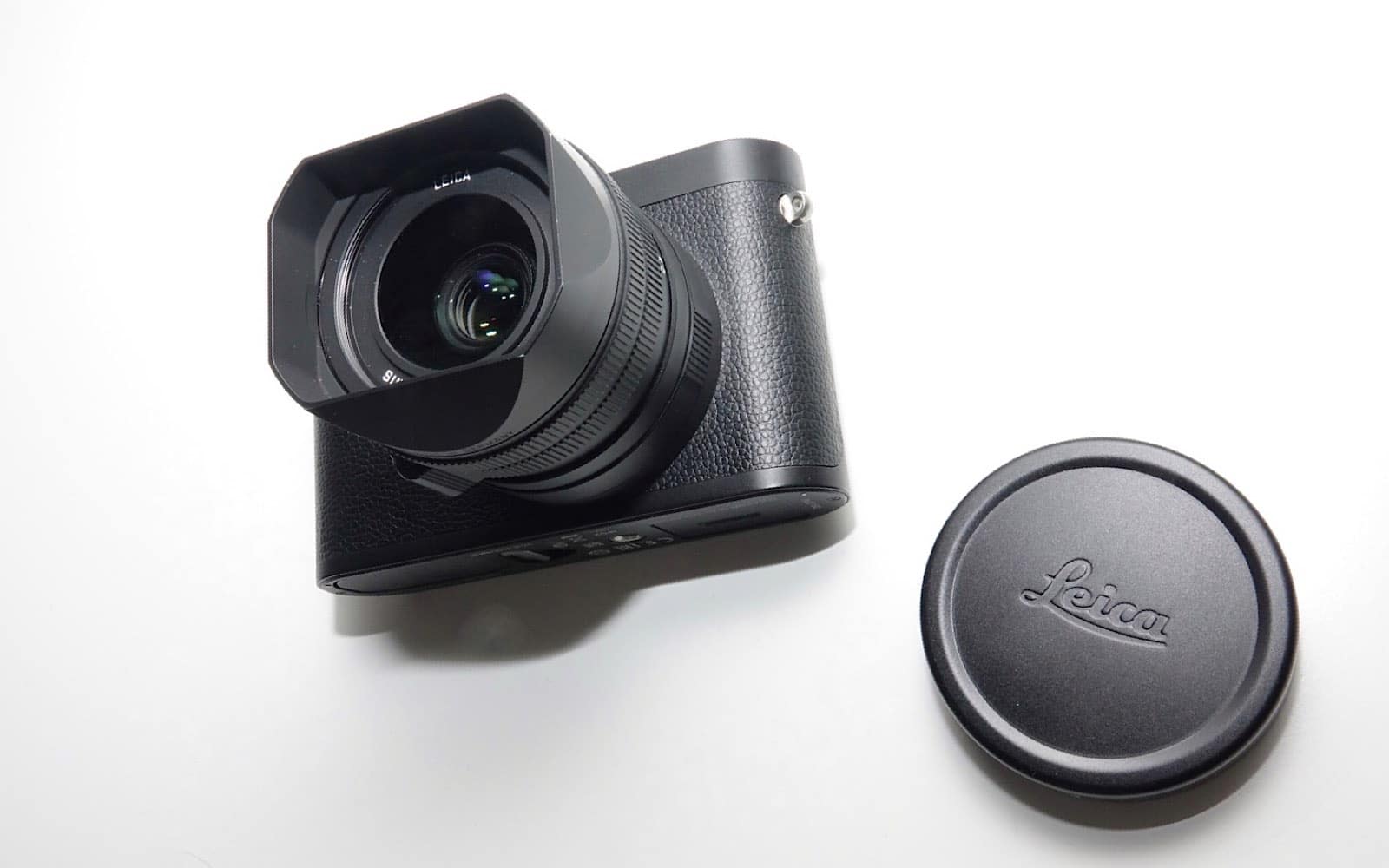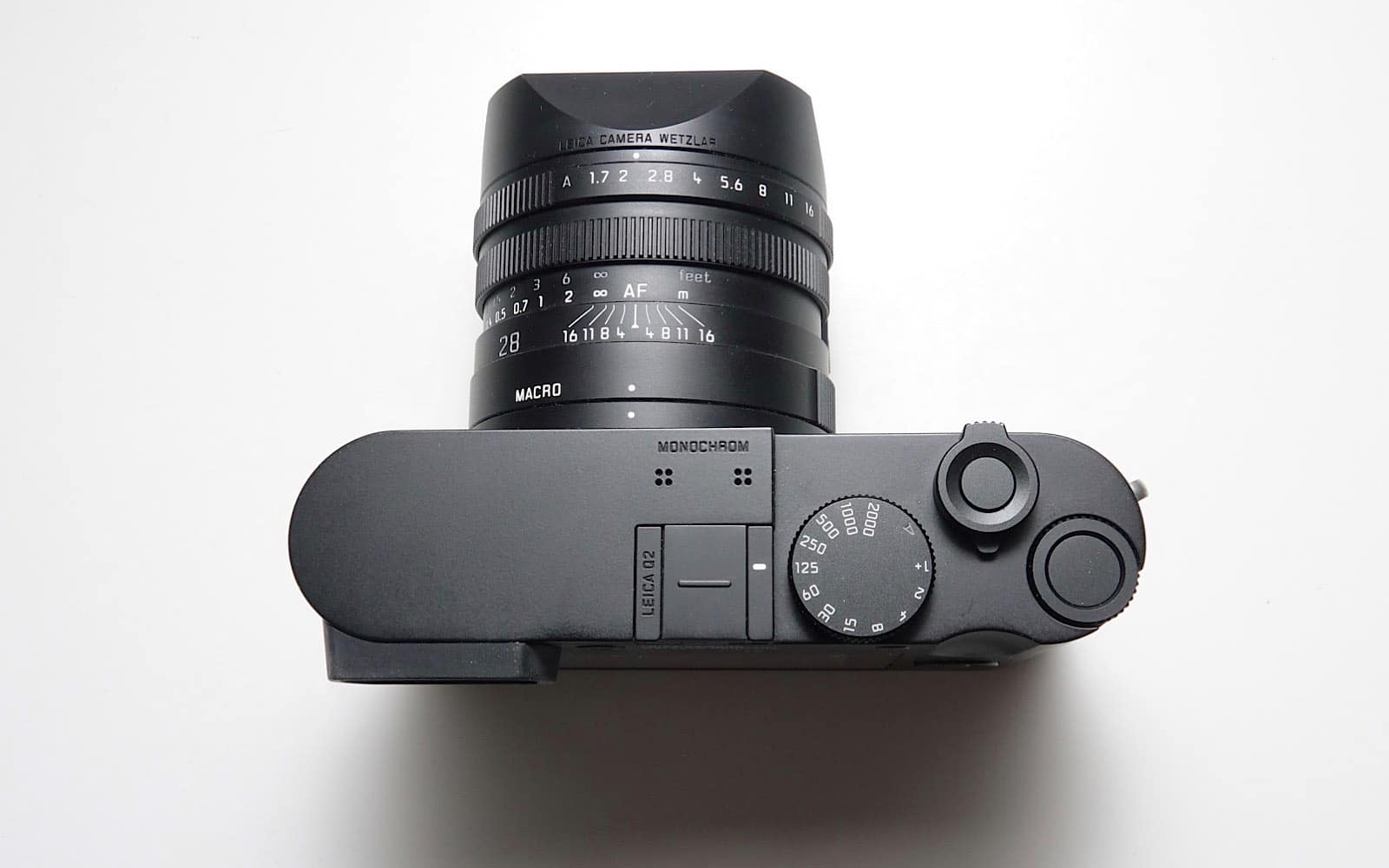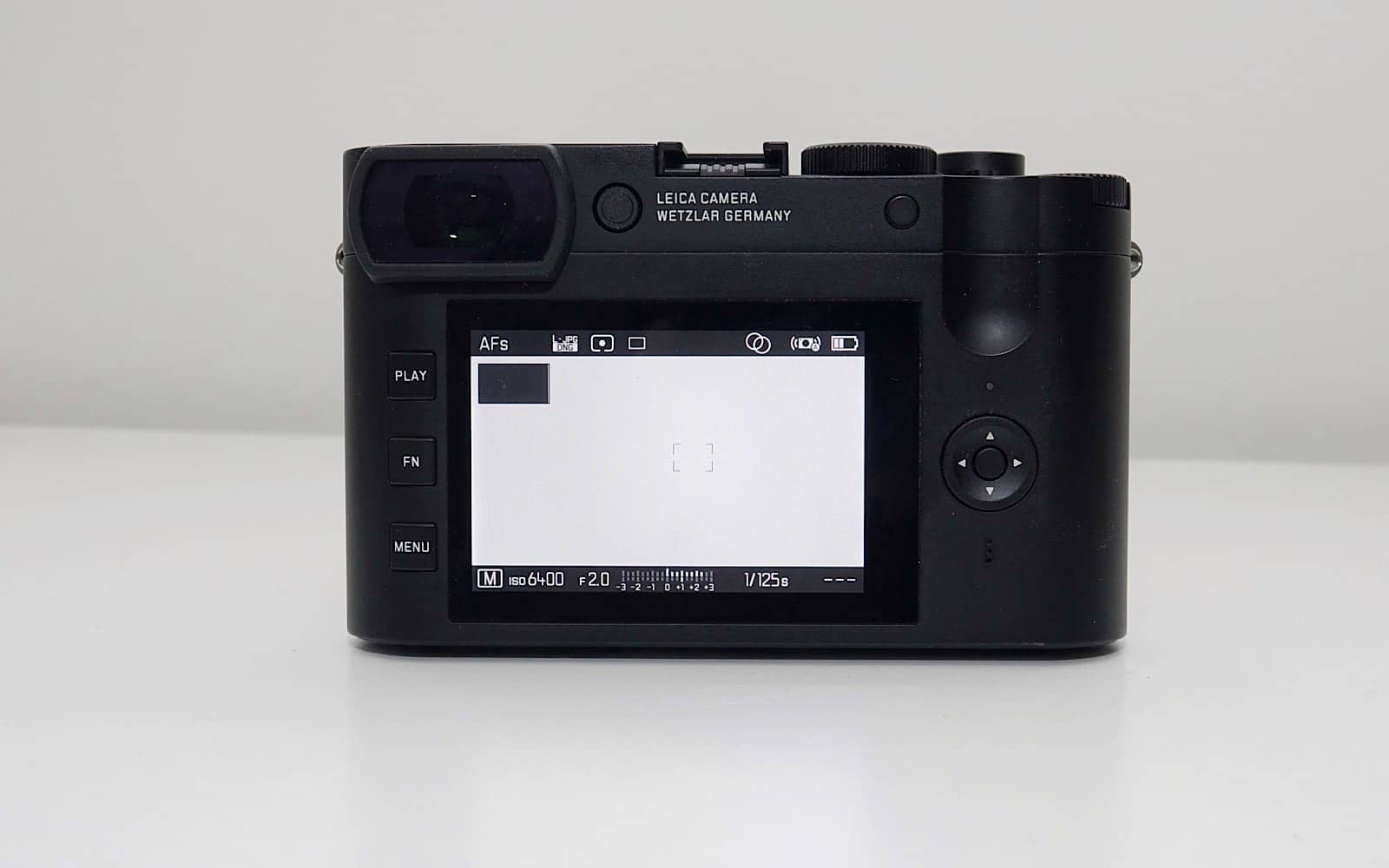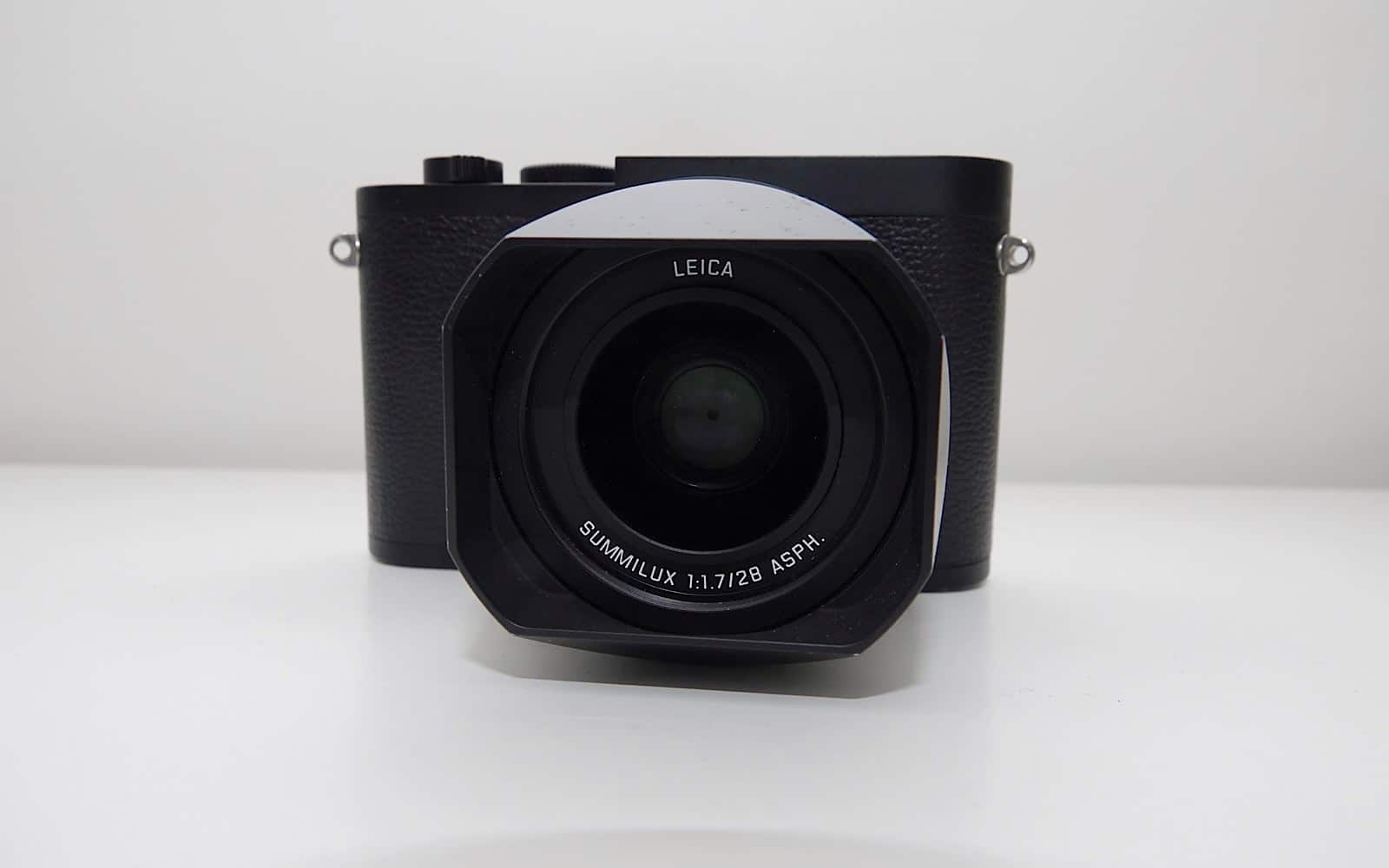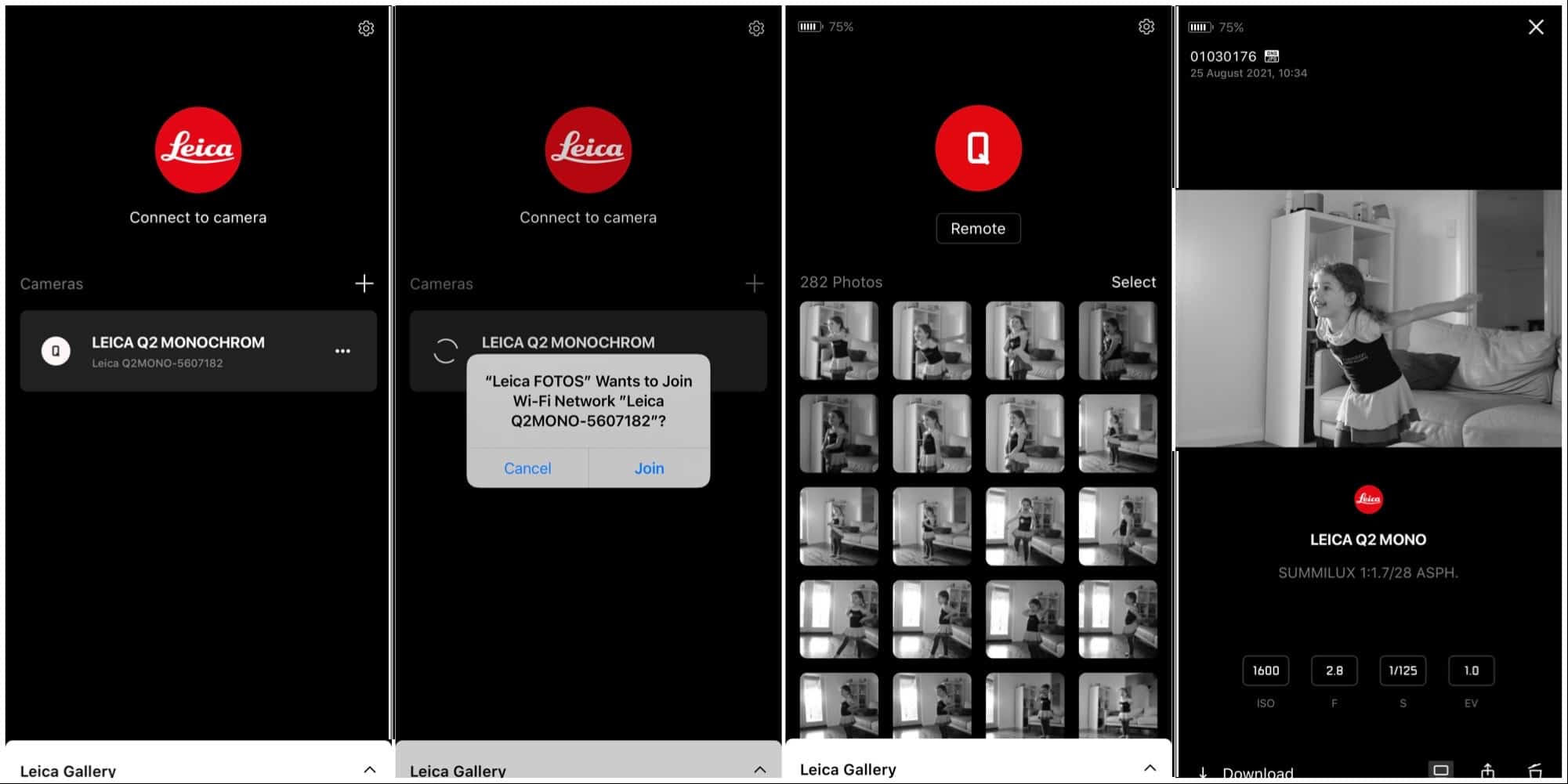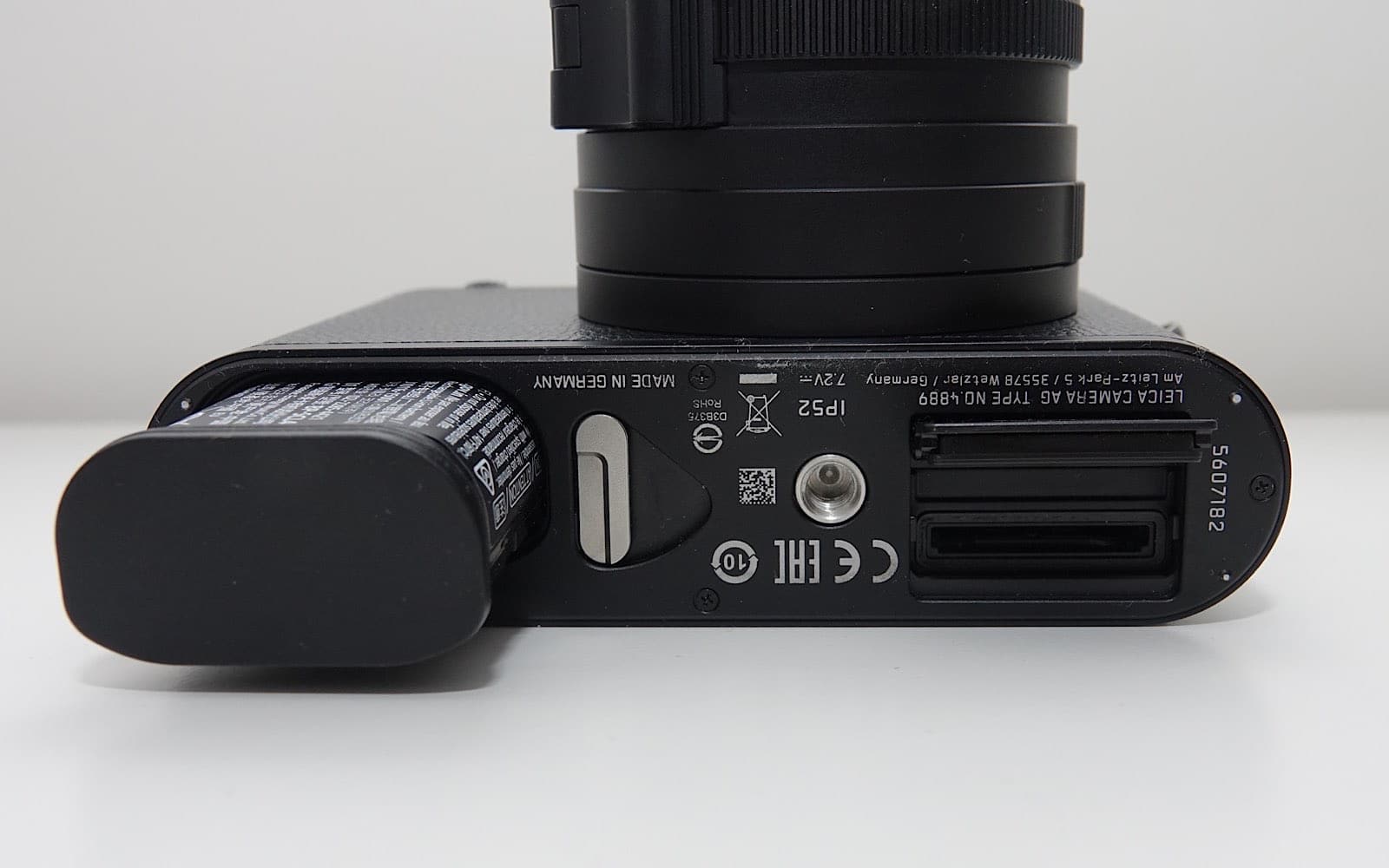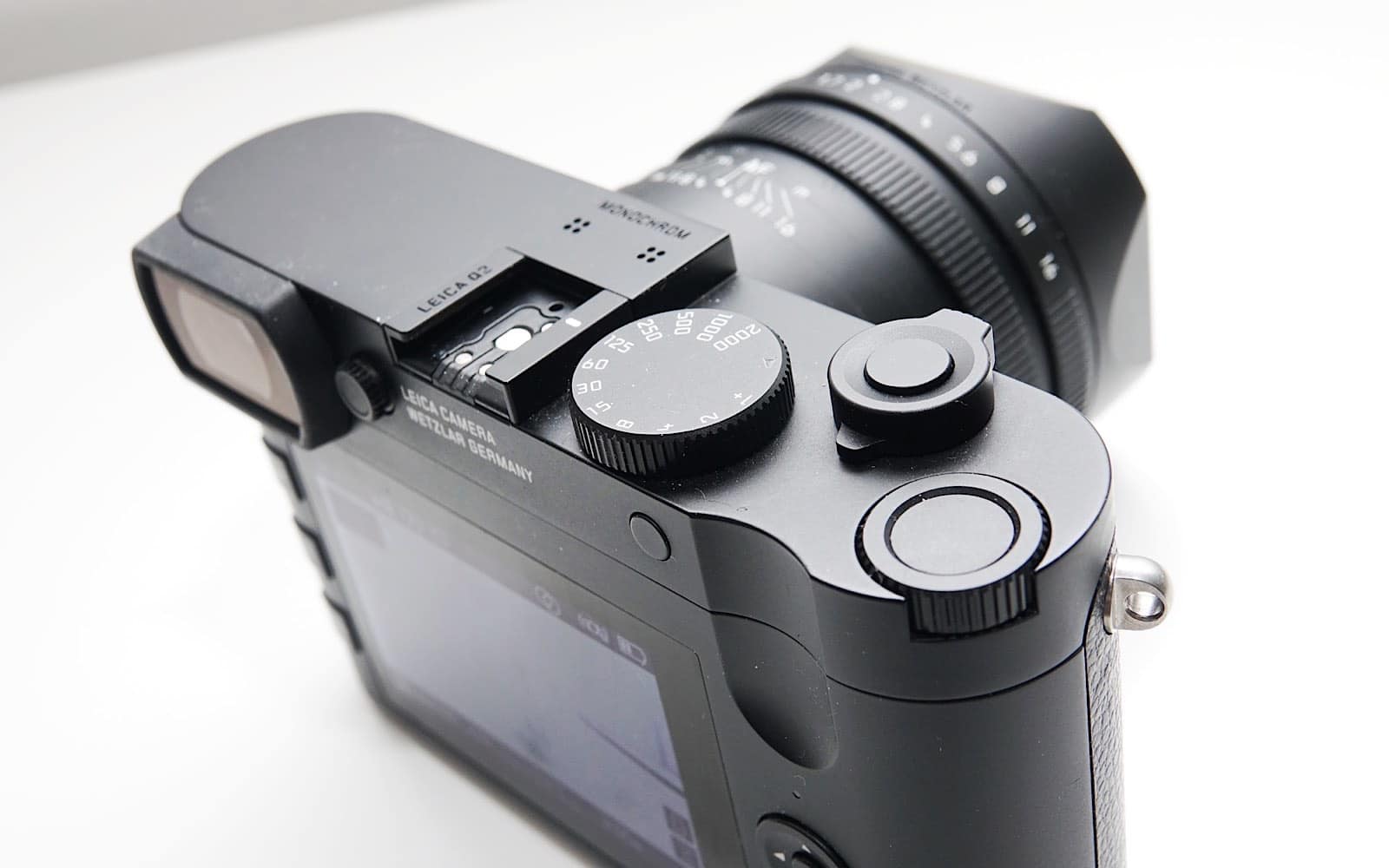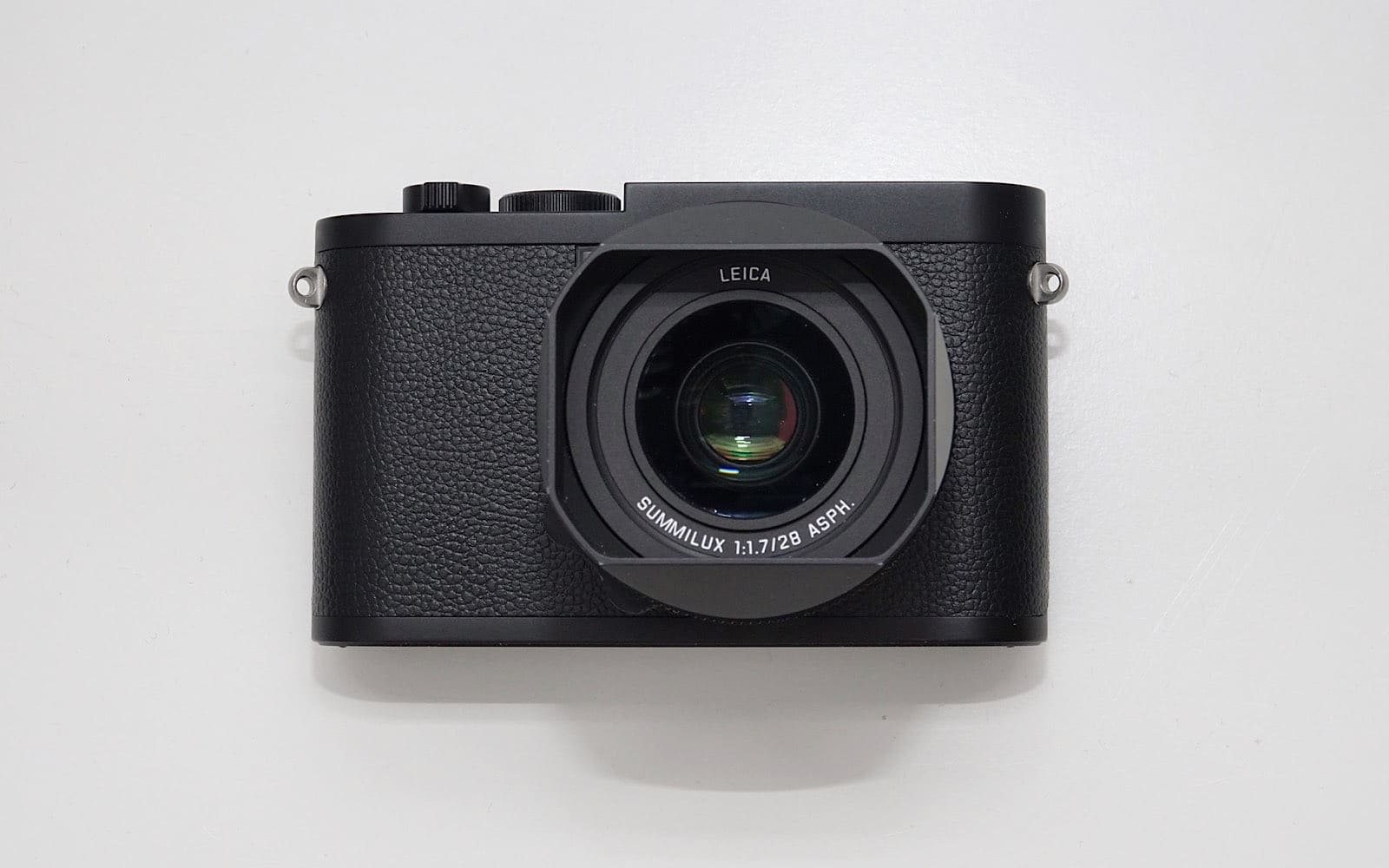Quick review
The good
The not-so-good
A camera that only captures in black and white? The Leica Q2 Monochrom might sound unorthodox, but it’s a beautiful tribute to cameras of old.
Standing out in the world of cameras can’t be easy, especially when phones are getting good. Really good. There are improvements to sensors, changes to form-factors, design differences, lenses and upgrades and wireless connectivity and so on and so on, and all of this has to compete with the ongoing improvements to the world of smartphone cameras, which get better and better and better each and every year.
But not every company is evolving simply for technology. Some have so much legacy in cameras that the focus is on something different altogether: keeping tabs on the art form that is taking photographs.
Photography is an art form, and one people still study and hold degrees in. Like a great writer, a photographer can tell a story using the scene, light and composition, and their tool — like a writer’s imagination — is the camera. Armed with the right camera, a great photographer can make anything appear, and lead the observer and viewer on a path that tells a story.
A photographer can use any camera they want to tell the story, and it can be as cheap as chips to as expensive as a high-priced car, but whatever they use, it’s their tool.
For some, their medium is one without colour. You might look at black and white images and assume the result is low or wasn’t good enough for colour, but monochromatic images can communicate without the need for all the colour, and sometimes say more. Tone and contrast can tell a story without a boost of vibrant and dynamic colours, and the result can be just compelling, if not more.
While the days of loading in rolls of black and white film are largely gone beyond the niche still doing just that (as it is with colour film), converting images to the aged look of black and white has become a thing anyone can do. Instagram and VSCO are options on mobile, as are Adobe’s Photoshop and Lightroom, and there are also the desktop equivalents. But there are also cameras that do this natively.
Almost every camera includes a black and white mode to let you capture in a monochromatic style, but few camera companies have as much legacy in black and white film as Leica. With cameras dating back as far as 1914 but more famously becoming known in 1927, Leica is an optics brand that understands cameras, with many of them having housed black and white film.
Leica hasn’t stopped producing cameras over the past century, and today, it even makes some of the more unusual and distinctive models out there, focused almost entirely on the art form of creating images.
And honestly, after spending a month with one, I don’t think I’ve loved using a digital camera as much as I loved this. The Leica Q2 Monochrom reignited my love for everything cameras, and the results were simply stunning.
Design and features
Designed like a camera and built like a camera, the Q2 Monochrom is, to put it simply, a camera.
Less like the interchangeable lens cameras you might expect out of Leica and more like an advanced point and shoot, this fixed-lens camera is very much out of the Leica stable simply because it includes a lens that aims to be surprisingly versatile, and a camera design focused on people who know what they’re doing.
Based on the template set up by the Leica Q2 released before it, the Q2 Monochrom (minus the “e”) is a black-and-white only version of the same camera, featuring a custom 47.3 megapixel monochromatic sensor distinctly different from the 47.3 megapixel colour sensor used in the standard Q2, and matched to a 28mm Leica Summilux F1.7 lens.
That lens is stuck to the body because it’s a fixed lens, and it offers an aperture controller ring like an old fashioned lens, while the shutter speed is handled on the body with an equally old fashioned metal click wheel.
The body is where most of the fun is, with a magnesium design and build that stands out and offers dust and light water resistance (weather resistance, basically), as well as a comfortable heft that makes it easy to carry and you can put your confidence in. Weighing 734 grams with the battery, the Q2 Monochrom is small, but it carries what might be the right amount of weight to make the camera just right. Goldilocks would be thrilled.
And she would be thrilled with more than just the design and build, with a 3.68 megapixel viewfinder to peek your eyes through complementing a 3 inch touchscreen that’s fixed in position, but also offers a directional pad controller to the right and three buttons on the left. You get a choice of how you want to look through the camera, and even a nicer place for your thumb, with the space for it just above the directional pad.
Up top is a hot shoe connector, and there’s a neat little pop-out to control the diopter on the viewfinder, while the other remaining button on the back right allows you to change the crop factor of the sensor, because that’s a thing.
While the 28mm lens is fixed on the Q2 Monochrom, there are ways to crop the sensor down through the lens to emulate other focal lengths. You’ll get the full 47 megapixels for the 28mm, but as you press the button on the back to change the focal length, it will crop to 35mm with 30 megapixels, 50mm with 15 megapixels, and 75mm with 7 megapixels. The Q2 Monochrom can capture RAW photos, too, but each RAW will be the full 47 megapixel scene in a DNG file, with the crop only going to the JPEG.
That 47 megapixel sensor is a full-frame 35mm sensor and supports an ISO range of 50 to 100,000, while the auto-focus clocks in at 0.15 seconds, fast enough for most. Leica has also included support for video capture in the camera, capable of handling 1080p Full HD, but also 4K in both 16:9 and Cinema 4K (C4K)’s 1.9:1, as well.
However this is almost entirely a black and white camera, though it does support a hint of colour by emulating a sepia tone photo, cyanotype, and also selenium, each having a weak and strong variation.
There’s also Bluetooth and WiFi built into the body, allowing the camera to talk to your phone and tablet for storage images, and even for controlling the camera remotely. An SD card slot can be found under the camera, as can the battery latch, but that’s basically it.
What it doesn’t have is ports, something you might expect from every camera. No microphone port. No headphone port. No USB port. No HDMI port. No ports of any kind. This is a port-less camera.
That’s not necessarily a bad thing, mind you, but it does tell you that Leica has built the Q2 Monochrom in the image of a classic camera, when the focus was more on taking pictures than on plugging things in.
In-use and ergonomics
And so taking pictures does appear to be the most important part of this experience, and so the ergonomics are particularly suited to doing just that.
If you know how to hold a camera, the Q2 has you in mind, though it could probably cater the side grip that other people use, with the lens feeling like it’s dead centre regardless of the hold.
Most people will hold the right side with the right hand, and to accommodate, Leica has included a curved indent where the thumb should go moulded into the metal body, helping your hands to feel at ease as you hold this camera.
In fact, if you’ve ever used a manual camera, the Leica Q2 Monochrom will feel immediately at home. Left hand under the camera, fingers wrapped around the lens, right hand holding the body and thumb in the crevice on the back.
This is a camera made for people who know cameras. It’s a camera made for those who think the camera is already an extension of their body and an extra limb already.
Those who fit that demographic will be at ease almost immediately with the camera, peeking through either the OLED viewfinder or the rear LCD touchscreen, setting the shutter speed up top, and capturing a shot. The Q2 Monochrom is a camera clearly built for photographers who know their craft.
But even if you don’t, there’s an auto mode on both the lens for aperture and on the shutter speed dial to let the camera do the work. Nine times out of ten, it does a stellar job, because image quality is the main reason you come.
Image performance
Aside for that classic style and feel, the main reason to consider the Q2 Monochrom is that you love photography and love taking photos. That’s what it has been built for, and it shows. Images are shot with a simple black and white look that achieves a loveliness provided you know what you’re doing, and even if you don’t, manages to make it seem like you do.
Experts will likely avoid the “A” setting for automatic everything, something you can set both on the aperture ring of the lens and the shutter speed controller up top. However, if you do use automatic, you’re treated to some pretty solid results, and you can tweak the exposure controller to achieve a slightly over-contrasty look by setting it slightly over-exposed if needed.
For everyone else, the manual controls give you a firm grip over the situation with immediate results. Whether you’re looking for an experience like an old film camera with a seemingly endless supply of film (dependent on your memory card, of course) or just want the most pure monochromatic experience out there, the Q2 Monochrom delivers in both day and night, but mostly in day.
The inclusion of an F1.7 Leica lens means you’re being given a fair amount of depth control to work with, and the result is a deliciously good portrait lens. You might be game to drop the aperture as low as possible, but between 2 and 4, the depth of field is enough to deliver creamy bokeh (where the background blurs, and is where a phone’s “portrait mode” is derived from) alongside some beautiful clarity.
Leica also includes a “macro” mode on the lens, something you can switch to that lets you get a little closer, though it’s not close like a proper macro lens, and will mostly be useful for seeing the finer details. The details of an eye and skin up close, the bumps on a dog’s nose, clarity of a flower, and so on.
No flash here dents the use you might get at night, but that is until you learn about the sensitivity of the Q2M.
Sporting an ISO range that practically screams future-proof, the Q2 Monochrom is helped by the fact that black and white kind of extends the capability simply because the grain is monochromatic, too, and so isn’t as dotty or noisy when viewed at extreme settings.
While the development of sensors has improved over time, it means capturing at ISOs of 6400 to 25600 aren’t actually bad at all on the Q2M, and the granularity you start to see past these numbers at 51200 and above look more like film, and less like the type of noise that would throw someone off the scent of high sensitivities in the first place.

It adds up to a surprisingly versatile camera, provided you don’t mind capturing imagery without colour, because again, that’s all the Leica Q2 Monochrom does.
It’s very much like being told your camera will only take Agfapan, Kodak Tri-X, or Ilford’s black and white rolls, because nothing else will fit here. There is no colour roll for the Q2 Monochrome, and it strictly does what it says on the label up top: this is a monochrome only camera. Open up the RAW DNG files, and you’ll see it there, too, with not a spot or hint of colour, save for when you’re running it in sepia, cyanotype, or the selenium filters which apply a tint over the top.
The results are often stunning, and display a look that can make scenes simply stand out, looking the part immediately with no need for extra processing out of the camera. This isn’t like where you take a shot in colour and think you’ll save it in black and white; every image is in monochrome already, and may already be there without needing to do the extra work. Just make sure you use the camera well, of course.
Video performance
One feature we didn’t expect the Q2M to include is video, something that may not scream classic camera, yet is supported here.
A mainstay from the Leica Q2 before it, this feature provides the ability to capture both 4K’s 3840×2160 and Cinema 4K’s 4096×2160 on this full-frame 35mm monochromatic sensor. It means you can capture videos on something that feels more like it was there to take only stills, giving it that little bit extra, handy given that meaty price tag.
You’re not just getting a stills camera, but something that covers both, though you only get the on-board microphones, thanks in part to that aforementioned port-less design. No ports means no microphone jack and no way to capture better sound in the videos, so the video can feel like a bit of an extra, but it’s one we’ll take.
Wireless connectivity
Another feature that shows Leica is thinking outside the standard realm of what is a camera is the wireless connectivity, which allows your phone or tablet to link up with the Q2 Monochrom rather easily. Almost too easily.
There’s the Leica Fotos app, and it exists for iPhone, iPad, and Android, offering both a way to transfer images — complete with JPG and DNG options, if you shot in RAW for the latter — while a remote mode makes it possible to capture using your phone or tablet as a viewfinder.
It’ll even trigger the shutter using the volume key, a trick that works on phone cameras, and that Leica has decided to pass through here in the app, making it a handy way to use your phone as cable-less cable release of sorts.
Battery
Regardless of how you use the Q2 Monochrom, you’ll find a battery good for between 150 and 200 shots we found, though we had a bit of video and wireless connectivity throughout that. That tells us if you’re sticking to images and images alone, you might be able to get 250 to 300 shots or so, which isn’t bad altogether.
That’s not a bad result altogether, though we wish you didn’t have to use a standard external battery charger for this camera. This is one area that would be nice to have dealt with, though missing pretty much every port, we do get why.
Value
The price, however, is going to be hard to swallow.
Carrying a recommended retail price of $9290 and a street price marginally less but still edging close to $9K, the Leica Q2 Monochrom is not an inexpensive camera.
That should largely be expected, though: it’s a Leica. And Leica’s aren’t cheap. There’s simply no such thing as a cheap Leica.
But while we can’t see the value of a $9K fixed-sensor camera, we can see what Leica is trying to do in the Q2 Monochrom: this isn’t supposed to be inexpensive, it’s supposed to be a brilliant legacy to rangefinders and people who love black and white film, and it basically achieves that while throwing in video support, as well.
What needs work?
That price makes us pause, though.
Don’t get us wrong, we love the Q2 Monochrom, but the price is so hard to swallow that it won’t be for anyone other than the most ardent of old school photographers and folks with more money than sense. Old school camera nuts with a lot of money may fit in that last category, but folks who wouldn’t bat an eyelid at the equally eye-watering price and wish the days of Agfapan, Kodak Tri-X, and Ilford BW were still a thing are more or less the target of the Q2 Monochrom.
And worth noting, it’s cheaper than the body only Leica M10 Monochrom, which carries an Australian retail price of $13,500 without a lens :O and with which the Q2 Monochrome is a little like a slightly lighter version of. Similar sensors, similar design, but the Q2 Monochrom locks its 40-odd megapixel sensor to a fixed lens, while the M10 Monochrom uses interchangeable Leica M lenses, and we probably don’t need to tell you how pricey they can run.
Sufficed to say, the Leica Q2 Monochrom is expensive, but it’s also not as expensive as the other Leica Monochrom model it draws inspiration from.
However for that price, it’s interesting that you get a couple of quirks and a stripped back camera, as well.
We found the quirks popped up between the viewfinder and the rear screen, with the light sensor too easy to trick between both. There’s not an amazing distance to trigger the LCD screen off and force you to go to the viewfinder, and we found that holding the Q2M close but wanting to look down at the screen would inevitably force the screen to go off. A slight arm’s reach was too close for the screen, it seemed, and we were forced to go to the viewfinder.
A fix might have been for Leica to use a vari-angle screen that pops out, though that might have sullied the look slightly, and probably added to the build. A screen built into that magnesium body with no extra hinges is much cleaner, to say the least.
Beyond this, there’s the problem of ports, or a lack thereof.
For all its beauty, Leica’s Q2 Monochrom is built to be a camera you can use, but one that you can’t plug in anything with. There are no ports on this camera at all. No headphone jack, no microphone jack, no HDMI or Type C port; this is basically just a camera, which these days is very much a rarity.
We kind of get why: it’s a camera for people who love cameras. Yet the omission of ports also lets down some of the capability of the Q2 Monochrom. With no microphone-in, the excellent 4K black and white mode can’t let you capture video with anything more than the on-board sound, making that lovely inclusion of black and white video feel not much more than a bolted-on addition that you can only use in limited ways.
You can still capture lovely video in black and white, but you’re going to be stuck with limited audio capture, and for a camera built like this, that’s a shame.
It’s also a little frustrating that you can’t charge the Q2 Monochrom simply by plugging it in, and are forced to take out a battery, pop it in a charger, and wait. Most cameras have had a USB charge port for a few years now, so to find the Q2 lags in that category is a little surprising.
We get the idea, mind you. The Q2 Monochrom is supposed to be a throw back to the heydays of photography, but we believe it’s possible to do that and still retain some of the extra features of the now. If it wasn’t, the Q2 Monochrom probably wouldn’t exist, digital sensor and all.
Final thoughts (TLDR)
It’s easy to forgive these notes, though, as the camera is just so lovely to use, and the results are as beautiful as they are a nod to classic film and prints.
While film still exists, it’s not something most people use. We doubt even the purists have access to an orange- or red-light darkroom, and have likely turned to digital for one reason or another, convenience possibly first, maybe followed by cost. Digital makes everything so much easier, but it can lose the romance and mystery from photography.
Leica returns that in this camera, delivering something that feels like a time machine of sorts, but one without the risks. And it’s a joy to use, one that can make you appreciate the art form in every scene so, so clearly.
The Q2 Monochrom is a love letter to photography, its signature dotted on every beautiful image you take. The results are simply stunning and the camera an absolute pleasure to use. Despite the price, it’s easy to recommend, just make sure you’re comfortable with spending up that big in the first place.





